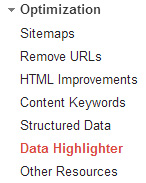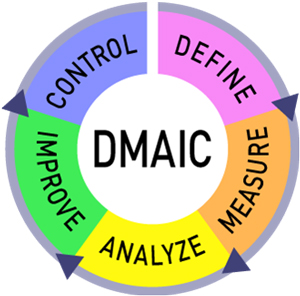In this post, our Sales trainer Emmet guides you through the differences between sales and marketing.
A question I am often asked is which functions are sales functions and which are marketing functions; the reason being that there seems to be so much overlap.

It's not as simple as this sign makes out!
The answer to this question is not clear cut and it's not easy.
You can learn about about the role of sales with ourSales and Customer Service Training.
Big and Small Organisations
In larger organisations there is often a separate marketing department; (theoretically) they do the marketing bits and the sales department does the sales bits!
In smaller organisations there is often no separate marketing department, it's all just ‘sales' although in this case the sales team will perform many marketing functions.
Either way, there is a distinct difference between marketing and sales, whether or not there's a physical divide between the two.
by Emmet
28 Dec 2012
When finishing a course, it is imperative that you finish on a positive note. Not only will this instil greater confidence in your learners but will give you a boost with regard to being able to see the effectiveness of your training.
You want your learners to leave feeling energised, positive and full of ideas of how they are going to implement everything they have learned.
You can learn more about ending on a high note on ourTrain the Trainer Course.

This means you need to leave enough time at the end of the course to really pull everything together and commit everyone to saying what they are going to do next!
Mary
24 Dec 2012
Updated Updated Update: Instagram have removed the ability to delete your account. We're not sure if this temporary or not, or whether they are hoping that people trying to delete their account forget by the time the function is back up.
Updated Update: Instagram are nowreverting back to the original terms of service. So it was all a nice bit of PR over a quiet period then!
Update: Instagram haveposted a responsein which they say they 'are listening' and as such they will be rewording their terms of service. It will be interesting to see if this combats some of the fears that Instagram users have.

Yesterday saw the release ofInstagram's new terms of servicewhich, it's safe to say, have riled up a fair few people.
The objectionable section of the release refers to the effective ownership of your photos by Instagram (and therefore Facebook) which allows them the right to sell said photos on to third-party advertisers.
It has sparked a debate about onlineproprietorship and 'open-source' content and what the legal implications of such arrangements are, as well as spurring a mass boycotting of the service.
![]()
You can learn more about terms of service andproprietaryrights on our Social Media Courses.
So if you too are concerned about having your photos left to the mercy of
Instagram's ad team,
there's really only one option. Delete your account. Delete it now.
Wait! Stop!Before you do that have a long, hard think.
As happens when any service updates their terms everyone is
jumping up and down in anger but there are definitely some reasons to hang around:
- It's most likely to just be legal speak. Instagram are unlikely to start running a ShutterStock service, it's just a way of opening up the service for future use (a bit like Google's recent privacy update).
- If you've built up a strong presence/ following on Instagram you will lose that in it's entirety! It's almost impossible to migrate 100% of followers from one network to another.
- If you weretrulyworried about privacy before then you never would have uploaded your images to the internet in the first place.
- "If you're not paying for something, you're not the customer; you're the product being sold."
If you're still convinced deletion is the way to go then read on to find out how...
Aaron Charlie
18 Dec 2012
In this post our business writing trainer Jakki will be discussing five particularly useful resources for business report writing. Jakki also runs ourContent Marketing Courses.
Most of us don’t learn report writing skills at school or university.
Yes, they teach you to write, but you soon realise that your brilliant essay-writing skills simply don’t cut it in the workplace. And unless you’re lucky enough to go on aReport Writing Training Course, you’re on your own.

There are many books out there on business writing, but which ones are a good investment? After all, it’s not as if you have much time to read.
Here, to save you time, are my top five resources on how to write reports that have a positive impact on both your organisation and your career.
1/ Word Tools
Not many people know it, but Microsoft Word comes bundled with customisable proofing tools that help make your writing more readable, as well as more accurate.
Jakki
18 Dec 2012
Within the PRINCE2® framework, the relationship between the corporate/programme management and the project management is important to define, especially with regard to progress. In this post, we'll explain the roles that corporate/programme management (hitherto c/p management) must fulfill and clearly set out the responsibilities of the project management in terms of notifying and updating c/p management on the progress of the project.
You can learn how to apply PRINCE2 to your projects on our PRINCE2 Practitioner Course.
Philosophy
For c/p management, it's about spending as little time as possible involved in the project whilst still maintaining overall control. This is termed 'management by exception'. Effectively this means that the c/p management approve the initial project plan and it's constraints, and then receive weekly or monthly updates (or whatever interval is appropriate for the time-frame) from the project management. So long as everything is running within the approved constraints, there should be no need for regular face-to-face meetings.
If the project does go outside of these pre-approved parameters then it is the c/p management's prerogative as to whether a review meeting is necessary.
Aside from overall approval of the direction and parameters of the project, the c/p management has other responsibilities to ensure the project runs effectively:

Andy Trainer
17 Dec 2012
You did it! You got that promotion or new job that means you'll be leading a team. It's an achievement in itself, but here's where the really hard-work begins!
If you're new to management, taking charge (and responsibility) of a group of people can be a daunting task, but fear not; help is on hand. We've compiled this handy guide to give you some ideas as to how to go about approaching your new role. Of course, you can always try our Management Skills for New Managers Training which teaches you everything you need to become a confident and successful manager.

1/ Prepare
We all know the classic adage "failing to prepare is preparing to fail" but in this circumstance it most certainly holds true. As you are a new manager, it's unlikely that you've done much research into it before now. Well, now is the time!
You've made a good start by reading this post, but there are literally hundreds of resourcesavailable to you on the subject (that go into much more detail on specific areas within management) so make use of them. In terms of research prior to starting the job, this is what you should be looking at:
- Management definitions- know exactly how your new job will differ to your old one in terms of roles and responsibility.
- Management styles- be aware of the different management styles that can be adopted and begin thinking about the style most suited to you.
- Techniques - everything from how to go about hiring and firing to how to talk to staff, it will all help in the long-run.
Andy Trainer
14 Dec 2012
Google have just announced an incredible new Data Highlighter in Webmaster Tools which allows you to mark up events on your site with simple point-and-click actions.
This is a life saver for webmasters who want to add structured data to their sites but don't have the skills to implement microdata, microformats or RDFa on their site.
For those unfamiliar with structured data markup, it is code added to a site, page or page element that makes content more understandable to search engines and other crawlers which is then translated into Rich Snippets- extra information shown in SERPs with your result. Previously, this would involve marking up elements individually using tags like schemas but now with Google's new Data Highlighter even those with no understanding of HTML can markup certain elements.

The idea behind Structured Data is to take the internet beyond just an archive of 'pages' and instead becomes an 'internet of things' - something that search engines are racing to be the best at. It's something Facebook does - recognising people, relationships, faces and interests. Google are on the right track with authors, publishers, knowledge graph and semantic search but they need the help of webmasters to take this a step further.
Structured data is vital for SEO - something we're looking to add to our SEO courses - not only does it help search engines understand your content but also gives you more visibility in SERPs. Likewise it's a must for content marketers - not so much for blog posts but for other content that needs clear labelling.
Currently the Data Highlighter tool just for events, but we believe that if this test is successful then other elements will be supported. Google made a similar move by making authorship markup (rel=author) easier to implement using email verification rather than tags.
How to Use Google Data Highlighter
The main point of Google's new Data Highlighter tool is that it is dead simple to use. It just requires a Webmaster Tools account and (of course) events on your website.
Disclaimer: If you're thinking "I love the sound of extra real estate in SERPs, but I don't have events,
I had better set some up!" then please stop right there. Tools like these only work if they're not abused.
If you must, think hard about what real event you could put on - it could be a talk, a free session
or a demonstration - just don't set up fake events.
Firstly, log in to your Webmaster Tools account, click on Optimization in
the sidebar and select Data Highlighter. Then click the big red 'Start Highlighting' button.
Craig Charley
13 Dec 2012
An American man who was diagnose with diabetes used his experience with Six Sigma to control the disease.
William Howell discovered he had Type 2 diabetes and was understandably concerned - potential health risks from diabetes if left unmanaged include blindness, strokes and heart-attacks.
However, William was a Quality professional and was aware of Six Sigma's framework for removing defects. By viewing his undesired symptoms as defects, he was able to use Six Sigma to bring his diabetes under control. You can read excerpts from William's bookabout managing diabetes here.
If you want to learn more about Six Sigma, try our Six Sigma Training.

DMAIC Phases

Howell decided to divide his diabetes plan into the five DMAIC stages -define, measure, analyse, improve and control.
If you want to find out more about DMAIC and other Six Sigma terms, why not download our Lean Six Sigma Glossary.
This is how he used each stage of DMAIC to manage his illness:
- Define Howell created a goal statement. His symptoms were related to his high blood glucose level, so this was the first target - reduce the level to a healthier 125mg/dl or less. His other main goal was to control his symptoms naturally rather than continuing to depend on medication by improving his diet and exercising more.
- Measure- Howell continuously measured his blood glucose levels and charted his food intake, including calories, fat and sugar.
- Analyse- He would then analyse this data for trends - noticing any correspondence between a day of high-calorie intake and high glucose levels, for example.
- Improve- Using his charts, he was able to notice any areas that he could improve upon to further his chance of achieving his goals. If his biggest contributor to high blood glucose levels was the days when he ate doughnuts, for example, his chart would reflect this and he could make the appropriate alterations to his lifestyle.
- Control - By being completely aware of any changes and reasons for them, Howell was able to make constructive choices with the help of his doctor. Any aspects which were causing difficulty could be easily identified and addressed quickly.
Andy Trainer
11 Dec 2012